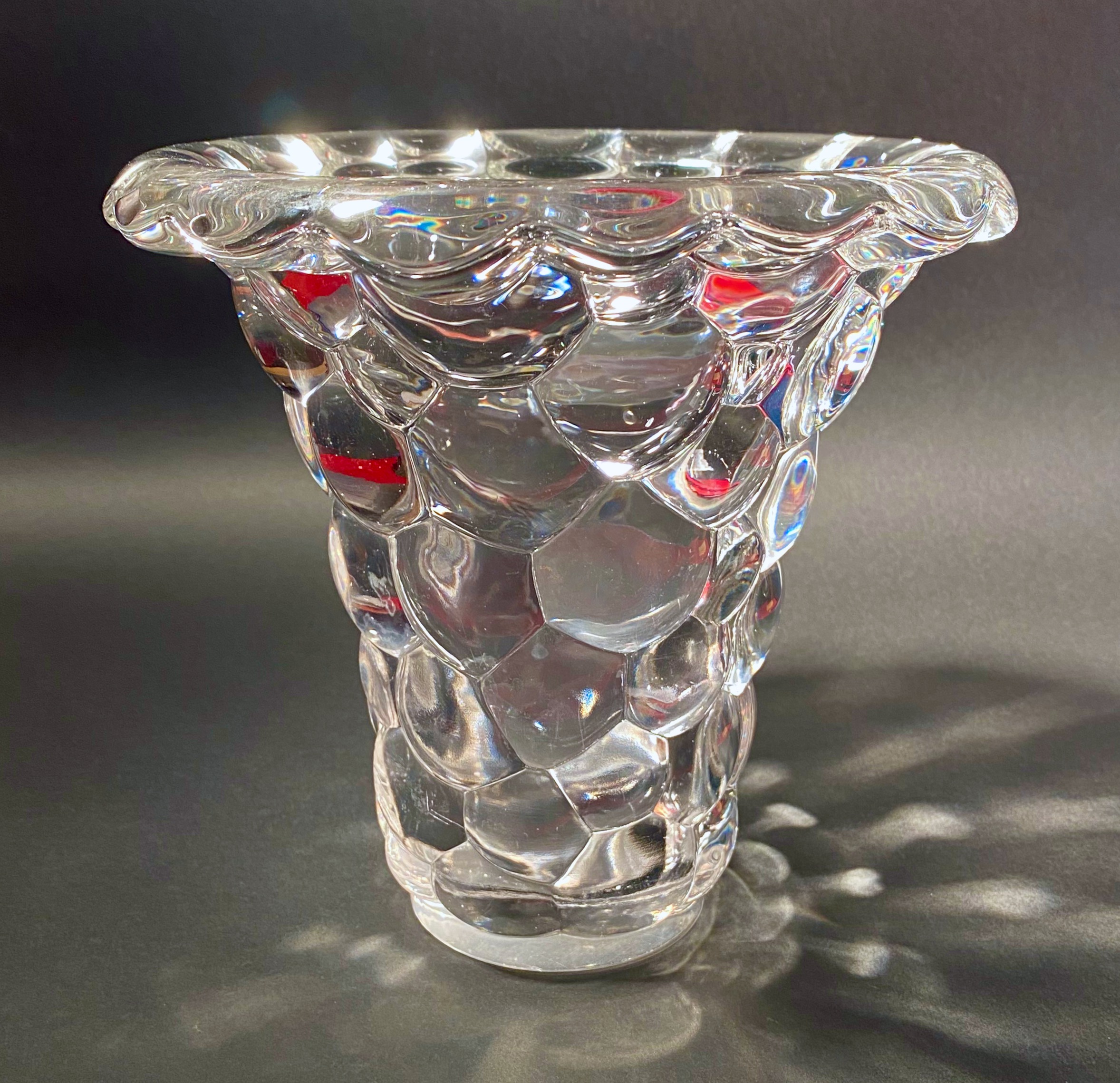

Title: Vintage Crystal hand blown Bubble Glass
Shipping: $29.00
Artist: N/A
Period: N/A
History: N/A
Origin: Southern Europe > Italy
Condition: Good
Item Date: N/A
Item ID: 530
This exquisite item is a beautiful example of vintage handblown crystal bubble glass. Its origin appears to be Italy, and the style is reminiscent of Venetian craftsmanship. The dimensions are approximately 7 3/4" in height and 7 3/4" in width. The overall condition is very good, with the only noted issue being some hard water marks on the interior. However, it's worth mentioning that these marks can likely be polished out for restoration. The history of Italian Venetian glass spans several centuries and is characterized by a rich tradition of craftsmanship, innovation, and artistic excellence. The city of Venice, with its strategic location on the Adriatic Sea and its early trade connections with the Byzantine Empire and the Islamic world, played a pivotal role in the development of glassmaking techniques and styles. Here's an overview of Venetian glass styles over the centuries: Medieval and Renaissance Period (13th - 16th centuries): Venice became a major center for glass production during this time. The city's glassmakers developed techniques such as enameling, gilding, and filigree to create intricate and colorful glass objects. The "cristallo" glass, a clear and transparent glass resembling rock crystal, was one of the significant achievements of this period. Venetian glass was highly sought after by royalty and aristocracy across Europe. Baroque Period (17th - 18th centuries): The Baroque era saw the refinement of existing techniques and the emergence of new ones. The "millefiori" technique, which involves creating intricate patterns using slices of glass canes, gained popularity. The techniques of "aventurine" (with its characteristic gold or copper specks) and "calcedonio" (mimicking the appearance of semi-precious stones) were also developed during this time. Neoclassical Period (19th century): The 19th century brought a revival of classical design elements. Glassmakers sought inspiration from ancient Greek and Roman art, leading to the creation of elegant, simpler glass pieces with a focus on form and proportion. The "opaline" glass, known for its soft and milky appearance, gained popularity during this era. Art Nouveau (Late 19th - Early 20th centuries): In line with the broader Art Nouveau movement, Venetian glass saw a period of experimentation with organic and flowing forms. Artists like Emile Gallé and Louis Comfort Tiffany influenced Venetian glassmakers, resulting in pieces characterized by sinuous lines, floral motifs, and iridescent surfaces. The "iridato" technique, which produced a shimmering rainbow effect, gained prominence.
Modern and Contemporary Period (20th century - present): The 20th century brought further innovation and collaboration between artists and glassmakers. The renowned Venini glassworks played a pivotal role in promoting modernist aesthetics in glass design. Artists like Carlo Scarpa and Fulvio Bianconi experimented with abstract forms, vibrant colors, and complex techniques. Murano, an island near Venice, continued to be a hub for glassmaking innovation. Throughout these periods, Venetian glassmaking techniques continued to evolve, influenced by technological advancements, artistic movements, and cultural trends. The skill and creativity of Venetian glass artisans have allowed the tradition to adapt and remain relevant in contemporary design. Today, Venetian glass remains highly prized for its history, craftsmanship, and artistic value.